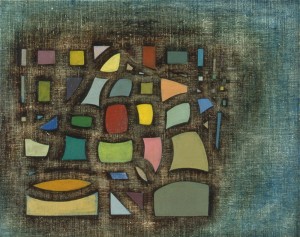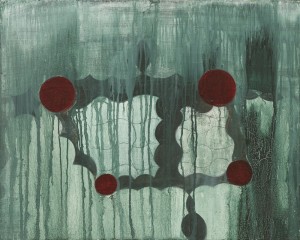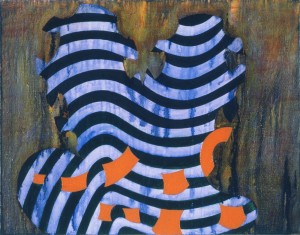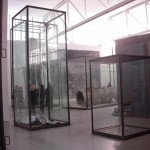There is something about Thomas Nozkowski’s work. Over sixty small-scale works seem to pose different questions and engage the viewer in different ways in the extensive show at Ottawa’s National Gallery (the first show curated by Marc Mayer, its new director). The paintings are mysterious; all are untitled, coded only with numbers. They deny the viewer information, but, consequently, unleash the imagination. Each of Nozkowski’s paintings is remarkably distinct; no two are alike.

Regardless of the superficial inscrutability of his work, the New Jersey-based painter presents strong, sensuous and compelling pieces. Nozkowski’s paintings are poetic, colorful, dynamic. There is a meditative quality to the canvases, a fascination that grows from his imperfect geometry. Each work an undeniable whole.

Considering Nozkowski’s work, I can’t say too much. It is more of an experience. I feel like the sensitivity and thought apparent in the washes and unconventional patterns of the paintings breathe a life of their own. The National Gallery must have also felt the same sort of reverence since, apart from an introductory text, the curator lets the work speak for itself with only a few quotes from the artist himself punctuating the otherwise blank white walls.
Aside from having being featured in over 300 exhibitions worldwide and garnering numerous accolades over his 30-year artistic career, Nozkowski has most recently won The Academy of Arts and Letters Merit Medal for Painting (2006) and been featured in Robert Storr’s exhibition at the Italian Pavilion at the 2007 Venice Biennale called Think with the Senses, Feel with the Mind – Art in the Present Tense.

Nozkowski’s work is indeed both sensuous and thought-provoking, as the Biennale title suggests. The work is also humble. The artist states that he wants his paintings “to be in service of life” documenting moments and ideas that he has lived. He has expressed his mission as follows: “My project has been to make paintings that come from things in the real world. I mean “things” to be taken in the broadest way – objects, ideas, moments – and I mean “real world” to be taken as broadly, including both physical and speculative realities.” His painterly language, at once natural, at once scientific, expresses moments, observations, explorations. He has truly abstracted his reality to create works that most suitably express ideas.

Nozkowski has the admirable ability to reinvent himself with each new canvas and also distance himself from any other style of abstraction. Watching the two YouTube videos (Thomas Nozkowski Interview and Thomas Nozkowski On a Hike) made by his son, Casimir Nozkowski, a viewer can enter Nozkowski’s world. The artist truly observes and engages the world around him, finding awe-inspiring geometric details in a scrap yard and poetically exploring painterly possibilities expressed in live interactions. Thinking back on his work, I now see his oeuvre as a personal collection of memories and observations explored. His art is cerebral, emotive, perceptive, exploratory, instinctive. He truly does capture moments. And just as no two moments can ever be the same, no two of his canvases are alike.
For more insight on the artist, read this interview.
Thomas Nozkowski runs at the National Gallery of Canada in Ottawa, Ontario, Canada until 20 September 2009.









